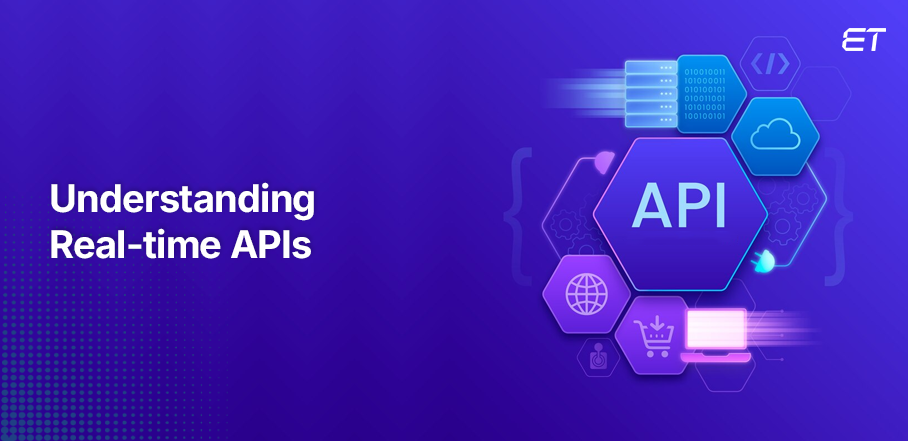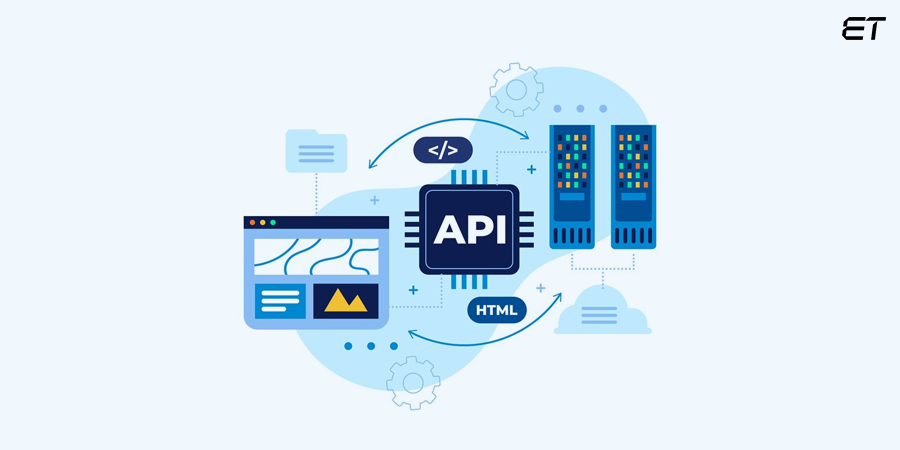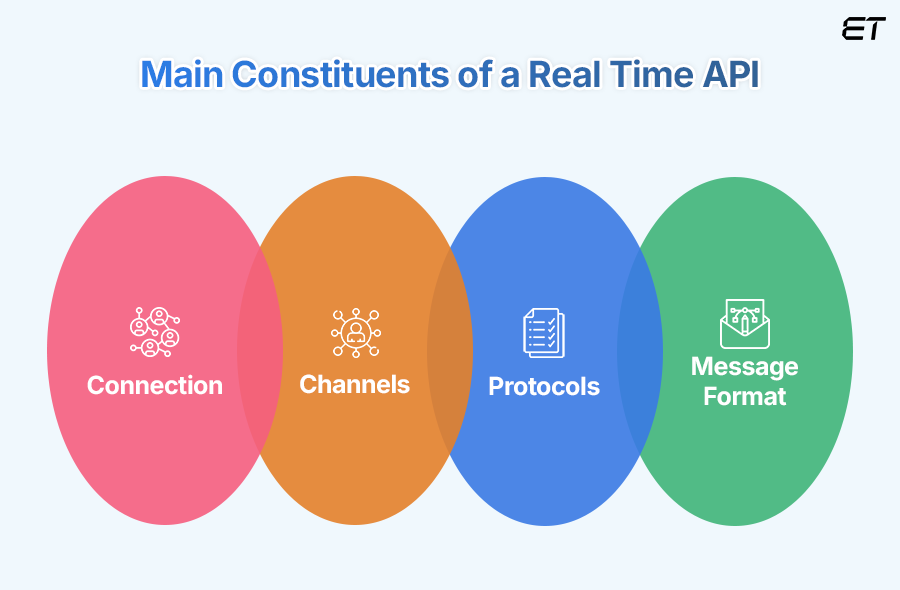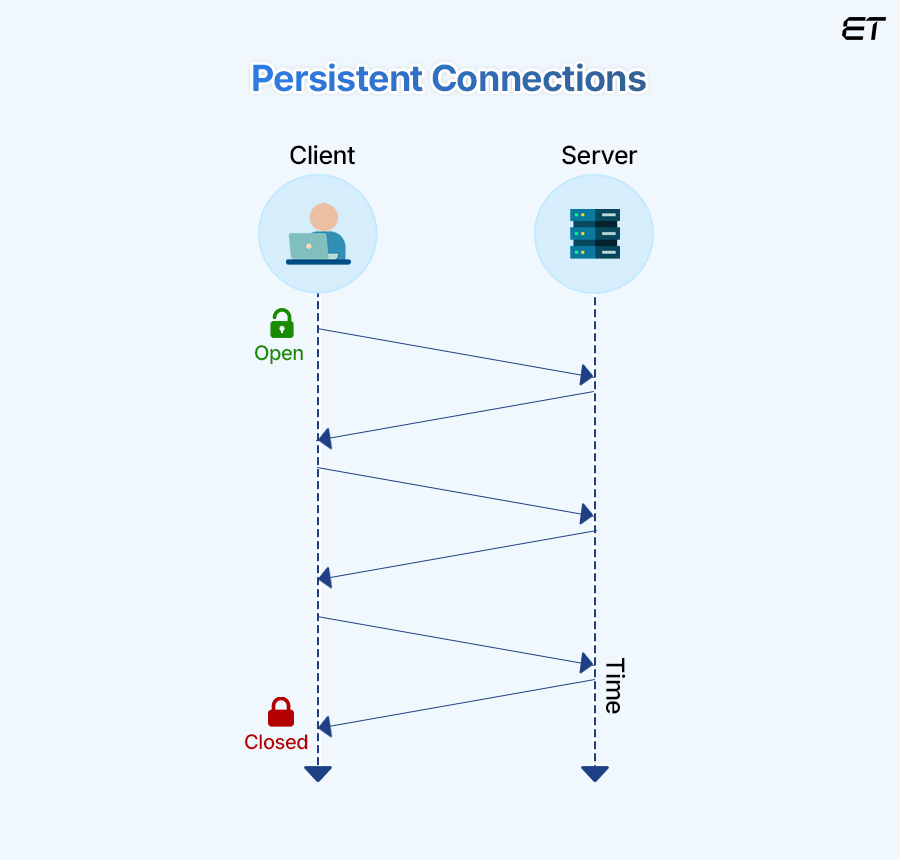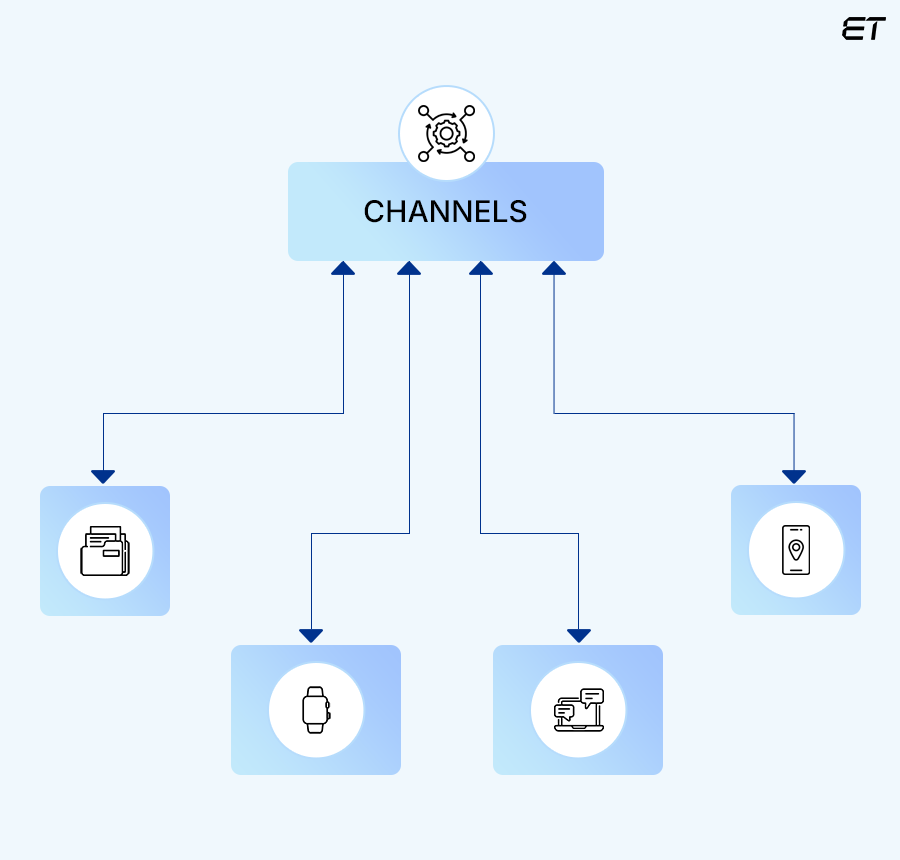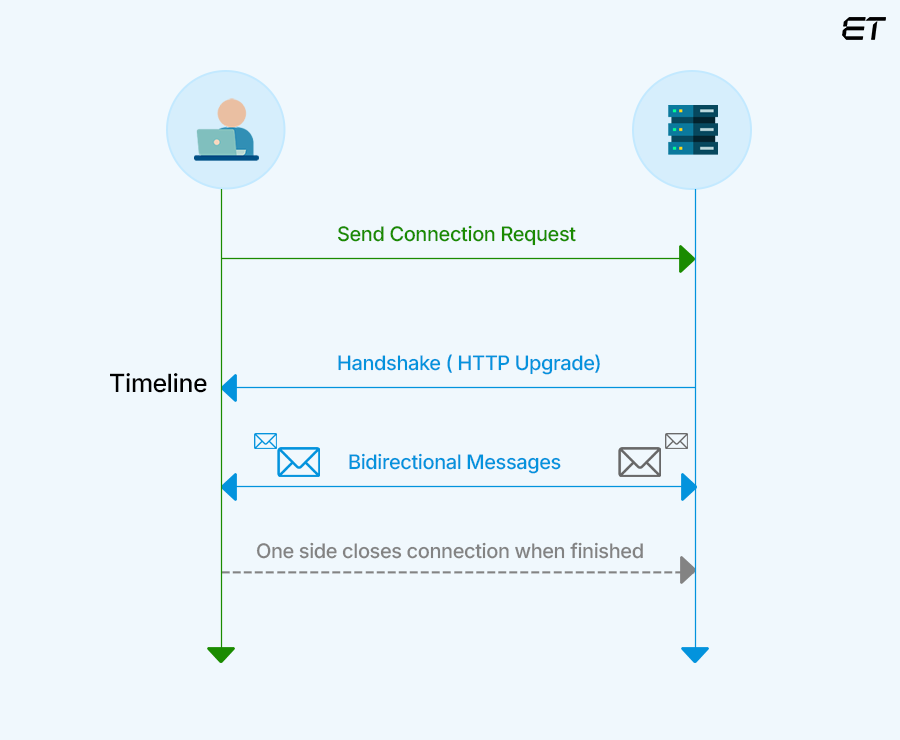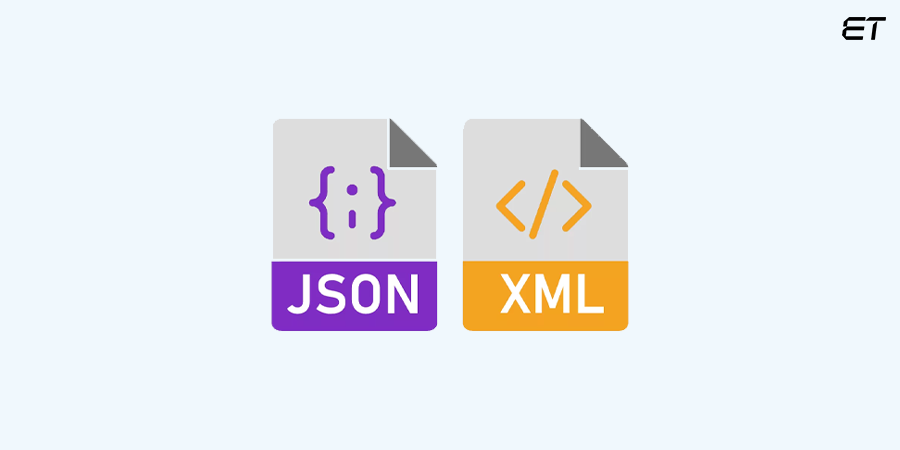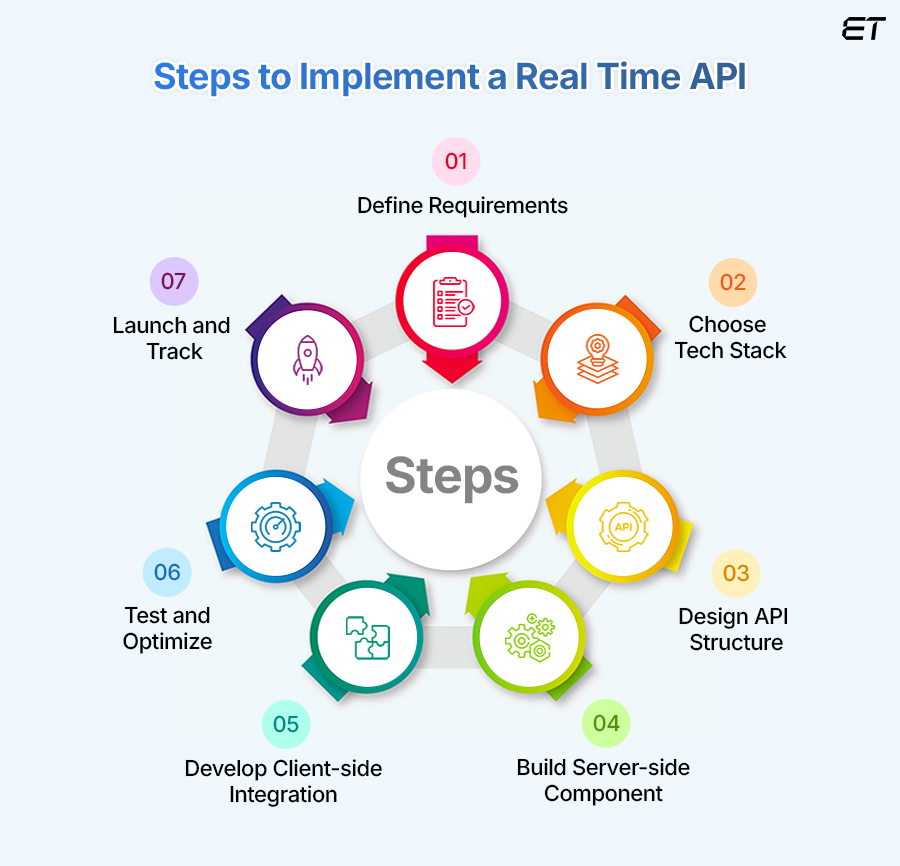Imagine a world without real-time updates. Stock prices change at an unknown pace, social media feeds refresh only when you manually reload, and online gaming is a laggy, frustrating experience. Every interaction with digital platforms would be delayed, leaving you feeling disconnected and uninformed. This is the reality without a real time API.
Real time APIs bridge this gap by providing instant access to dynamic data. From financial trading platforms to social media giants, businesses across industries rely on real-time APIs to portray innovation, boost customer satisfaction, and gain a competitive edge.
In simple terms, a real time API enables companies to make data-centric decisions in real-time, optimize operations, and create engaging customer experiences. By understanding the core concepts, examples, and best practices associated with real-time APIs, you can harness their power to build dynamic and responsive applications.
In this blog, we will explore real-time APIs, their workings, various applications, and the challenges involved in their implementation.
Propel innovation with cutting-edge real-time APIs. Contact us to elevate your digital ecosystem today.
The Concept of a Real Time API
To understand the topic of real time API, let us take the example of a shopping store.
Imagine walking into the store and finding the prices on the shelves are always out of date. Seems frustrating, right? This is essentially the world without real-time APIs.
Technically, a real-time API is a set of protocols and standards that allows applications to exchange and retrieve data instantaneously. Unlike traditional APIs that operate on a request-response model, real-time APIs maintain an open connection, enabling continuous data flow.
Popular examples of real-time APIs in action include the following:
- Live stock quotes
- Online chat applications
- Collaborative document editing tools
These applications rely on real-time data updates to provide a seamless and engaging user experience. (You might also be aware of Rest API, a prominent name related to real time functionality). Now, to know more about a real time API in technical terms, you need to delve deep in comprehending the key components.
So, to understand how these APIs function, explore the next section.
Streamline your search for expert developers adept in real-time APIs. Start your project today!
Key Components of a Real Time API
A real time API has several essential elements working in tandem to deliver instantaneous data exchange. In essence, these protocols have the following main constituents:
- Connection
- Channels
- Protocols
- Message Format
Let us understand each component in depth.
1. Persistent Connection
A persistent connection is the foundation of real-time APIs.
Traditional HTTP connections are established and used for a single request. After that, they are closed. On the other hand, a persistent connection remains open for an extended period.
This continuous link between the client and server is crucial for real-time data exchange.
Here’s the working of this component:
- Initiation: When a client connects to a real-time API, a persistent connection is established
- Data Transfer: Once the connection is open, data can flow freely between the client and server in both directions (The API calls for initialization of specific events)
- Maintenance: The connection remains active until explicitly closed by either the client or the server
The benefits of persistent connections in a real time API are as follows:
- Reduced latency
- Efficient resource utilization
- Real-time updates
Overall, by establishing and maintaining persistent connections, real-time APIs can deliver the responsiveness and interactivity required for modern applications.
2. Data Channels
Simply put, data channels act as virtual pipelines that streamline the flow of information. They provide a mechanism to categorize and distribute live data efficiently.
The main characteristics of data channels are as follows:
- You can organize channels around specific subjects or events
- It is possible to channel data to individual users or groups, enabling personalized experiences
- Data channels can handle varying data volumes, ensuring efficient distribution
- Robust data channels guarantee the delivery of data to subscribed clients
By using this component of a real time API, you can notice the following advantages:
- Improved performance
- Enhanced scalability
- Flexible distribution
All in all, by utilizing data channels, a real time API can deliver a more efficient, targeted, and personalized experience for users. Ensure you understand terms like API keys to make the best utilization of a realtime API.
3. Real Time Protocols
This real time API component defines the rules and formats for data structuring and transmission between the client and server.
There are two vital real time protocols as follows:
- WebSocket: This protocol offers bidirectional communication. It allows the end client and server to initiate data transfers
- Server-Sent Events (SSE): SSE is useful for unidirectional communication, where the server pushes data to the client
The choice of this protocol depends on the unique requirements of your application:
- Bidirectional communication: WebSocket is the ideal choice
- Unidirectional data flow: SSE is appropriate
- Low latency: Both WebSocket and SSE can provide low latency, but WebSocket generally offers slightly better performance
- Scalability: Both protocols can handle a large number of concurrent connections, but WebSocket might be more efficient for high-traffic applications
So, by understanding the characteristics of different real-time protocols, you can select the most suitable option for your application.
Struggling with real-time protocols? Partner with our experts and transform your application today!
4. Message Format
A message format defines the structure and content of data transmitted between the client and server in a real time API. It ensures that both ends can interpret the data accurately.
Here are some vital message formats:
- JSON (JavaScript Object Notation): This is the most widely used format for real-time APIs due to its simplicity, readability, and support by most programming languages
- XML (Extensible Markup Language): XML provides a structured way to represent data using tags, but it tends to be more verbose than JSON
- Protocol-specific formats: Some real-time protocols have their own native message formats
Regardless of the format, a real-time message typically includes the following components:
- Header
- Payload
- Event type
To choose the most suitable message format, you can consider the following points:
- JSON is generally easier to read and understand than XML
- In addition, JSON is more lightweight and efficient to parse than XML
- Consider the programming languages and platforms involved in your application
- The complexity of the data being transmitted might influence the choice of format
Overall, by selecting a message format, you can ensure reliable and efficient data exchange in your real-time applications.
How do Developers Implement a Real Time API?
Building a real time API needs a combination of careful planning, technical expertise, and a deep understanding of the application’s requirements.
As a business, you should understand the general steps of developing real time APIs. This way, you can choose a suitable IT vendor for your project. Below are the general steps of real time API implementation.
Define Requirements and Choose Technology Stack
First, it is essential to define the purpose of the API and the type of exchange data. Choose a protocol like WebSocket or Server-Sent Events based on the application’s needs.
Select programming languages, frameworks, and libraries that support real-time communication.
Design API Structure
Next, determine the structure of the data for transmission purposes. It is vital to design data categorization and distribution.
Also, protect the API with appropriate security measures. For this purpose, always consult an experienced IT vendor.
Build the Server-side Component
It is crucial to implement the chosen protocol to maintain open connections with clients.
Develop code to process incoming data, update data sources, and broadcast changes to connected clients. Further, it handles potential connection issues, data inconsistencies, and other errors.
Develop the Client-side Integration
In this step, you should implement client-side code to connect to the real-time API. Create logic to process real-time updates and update the user interface (UI) accordingly.
Do not forget to handle connection events like opening, closing, and reconnecting.
Shield your front end from vulnerabilities! Discover the top 7 security best practices now.
Test and Optimize
For the best results, test the API under various conditions. Rigorous testing helps identify and fix performance issues.
Optimize data transfer, connection management, and error handling for the best performance. Also, conduct security and code audits to identify and address vulnerabilities.
Deploy and Monitor
The final step involves choosing a suitable hosting environment for the real time API. Track API performance, usage, and error rates.
It is vital to prepare for increased traffic and data volume by scaling the infrastructure.
By following these generic steps, you can build an efficient real time API even for your mobile applications with interactive experiences.
Prominent Examples of a Real Time API
Real-time APIs are the driving force for several applications we use daily. Let’s explore some well-known examples.
Social Media
| Twitter Streaming API | Delivers real-time tweets, allowing for sentiment analysis, trend monitoring, and building custom applications |
| Facebook Graph API | Provides real-time updates on friend activity, likes, comments, and other interactions |
Financial Services
| Stock market data feeds | Offers live stock prices, market indices, and trade data for trading platforms and financial analysis tools |
| Cryptocurrency exchange APIs | Provide real-time cryptocurrency prices, trade volumes, and market data |
Gaming
| Esports platforms | Deliver live match data, player statistics, and betting odds |
| Online gaming platforms | Enable multiplayer interactions, leaderboards, and real-time game updates |
Transportation
| Flight tracking APIs | Offer real-time flight information, including departure/arrival times, delays, and gate changes |
| Ride-sharing apps | Provide real-time location data for drivers and riders, enabling efficient matching and trip tracking |
Communication
| Messaging apps | Enable real-time chat, message delivery, and read receipts |
| Video conferencing platforms | Facilitate real-time audio, video, and screen sharing |
These are just a few examples of how a real time API revolutionizes industries. As technology and software continue to advance at a brisk pace, you can expect more innovative applications powered by real-time data.
Summing Up
All in all, a real time API is the backbone of modern, dynamic applications. By providing instant access to data, they transform user experiences, drive business decisions, and fuel innovation.
Understanding the core components — persistent connections, data channels, protocols, and message formats is crucial for developers and businesses alike. From social media to finance, gaming to transportation, real-time APIs have the potential to reshape several domains.
As technology and software evolve, you can envision more enthralling web applications powered by this transformative technology. So, if you too want to explore and leverage the power of a real time API, contact us and allow our developers to build apt applications for your business.
Reimagine innovation with custom real-time API solutions tailored to your vision. Let’s connect!
Frequently Asked Questions
1. What is the difference between real-time APIs and traditional APIs?
Real-time APIs maintain a seamless connection for continuous data flow, unlike traditional APIs that operate on a request-response model. This trait allows for immediate data updates and interactive applications.
2. What are the challenges in developing a real time API?
Developing a real time API requires attention to factors like scalability, latency, security, and error handling. Maintaining persistent connections and ensuring efficient data delivery can be complex without thorough technical knowledge.
3. How can I choose the right real-time protocol for my application?
You should consider the nature of your application when selecting a protocol. For bidirectional communication, prefer WebSocket. On the other hand, Server-Sent Events (SSE) is suitable for unidirectional data flow.
4. What are some common use cases for real-time APIs beyond the prominent ones?
Real-time APIs are extensively used in web applications, including Internet of Things (IoT) devices, financial trading platforms, online auctions, and collaborative document editing tools.
Excellence-driven professional with 15+ years of experience in increasing productivity, and revenue, while effectively managing products of all sizes. He has worked for international clients in the US, UK, and Singapore and local companies in various domains. With excellent attention to detail and a methodical approach to execution, he is an expert in bringing projects to a successful stage. He follows James Humes’s famous saying- “The art of communication is the language of leadership.”
